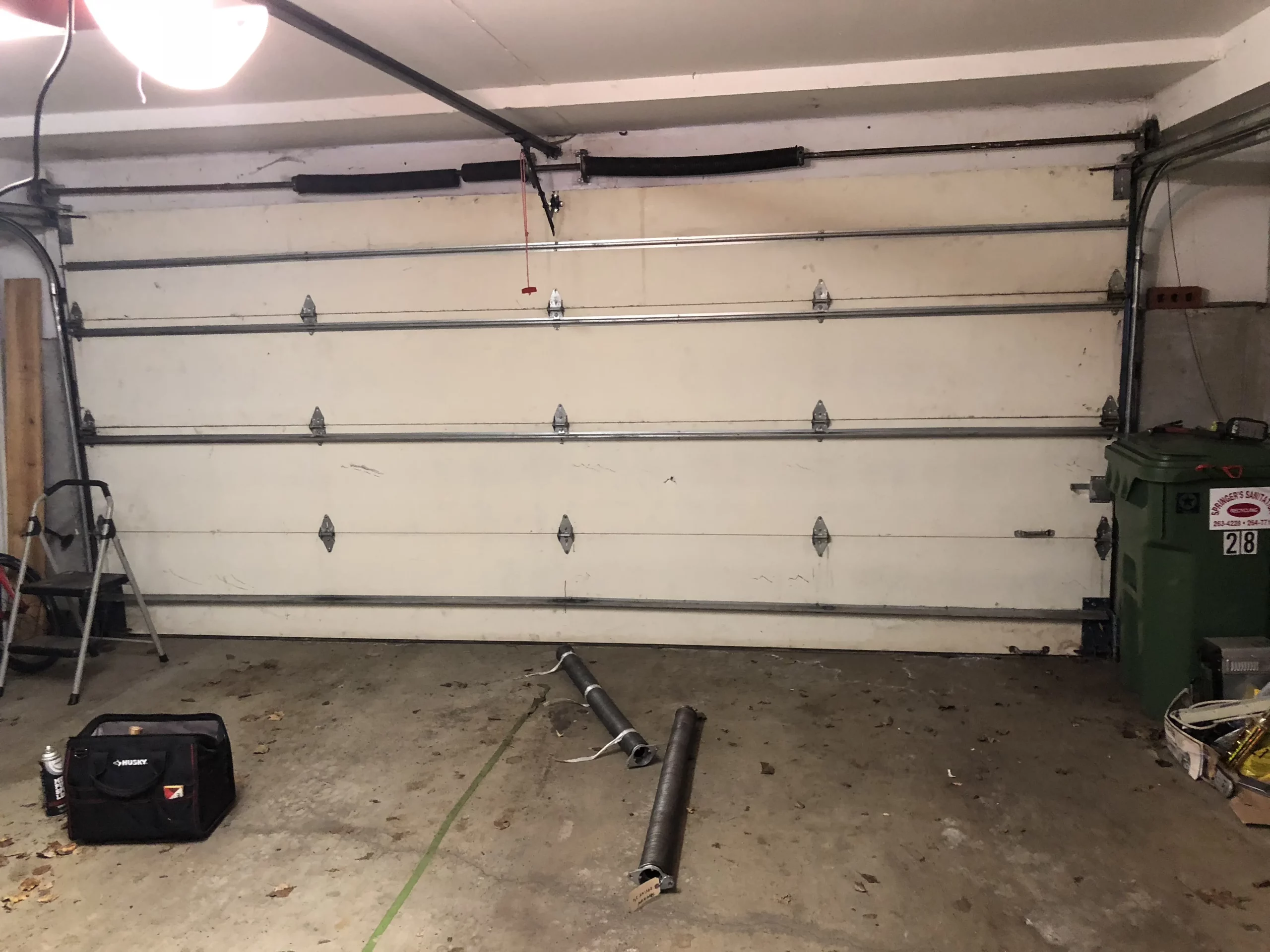Fixing a garage door can involve various common problems, and many of them can be addressed through do-it-yourself (DIY) repairs. Here are some common garage door issues and DIY solutions:
- Lubricate Moving Parts:
- Problem: Squeaky or noisy garage door.
- Solution: Apply a lubricant, such as silicone-based lubricant, to the rollers, tracks, hinges, and springs to reduce friction and noise.
- Tighten Loose Hardware:
- Problem: Loose nuts, bolts, or screws.
- Solution: Regularly inspect and tighten any loose hardware using a wrench or socket set. Pay attention to brackets, rollers, and other components.
- Adjust the Garage Door Tracks:
- Problem: Misaligned tracks causing the door to bind or not close properly.
- Solution: Use a level to ensure the tracks are plumb and make adjustments as needed. Tighten or loosen the bolts holding the tracks in place.
- Clear Obstructions in Tracks:
- Problem: Objects or debris blocking the garage door tracks.
- Solution: Inspect the tracks for any obstructions and remove them. Clean the tracks regularly to prevent debris buildup.
- Check and Replace Rollers:
- Problem: Worn or damaged rollers.
- Solution: Inspect the rollers for signs of wear or damage. If necessary, replace rollers with new ones. Nylon rollers are quieter than metal ones.
- Tighten or Replace Hinges:
- Problem: Loose or damaged hinges.
- Solution: Tighten loose hinge screws or replace damaged hinges. Ensure that hinges are securely attached to the door.
- Inspect and Replace Springs:
- Problem: Broken or worn-out garage door springs.
- Solution: Replacing garage door springs can be dangerous and may require professional assistance. If you’re experienced, follow safety precautions and replace springs. Otherwise, seek professional help.
- Adjust the Garage Door Opener Limit Settings:
- Problem: Garage door not closing or opening fully.
- Solution: Adjust the limit settings on the garage door opener. Refer to the opener’s manual for instructions on adjusting the up and down limits.
- Replace Weatherstripping:
- Problem: Damaged or worn weatherstripping.
- Solution: Replace weatherstripping along the bottom of the garage door to maintain a proper seal and prevent drafts.
- Inspect and Replace Cables:
- Problem: Frayed or damaged cables.
- Solution: If you notice frayed or damaged cables, it’s best to seek professional help for replacement. Garage door cables are under tension and can be hazardous.
- Test Safety Sensors:
- Problem: Garage door reverses before closing or doesn’t close at all.
- Solution: Check the alignment of the safety sensors. Clean the sensors and ensure they are properly aligned to allow the door to close.
- Replace Garage Door Opener Remote Batteries:
- Problem: Garage door not responding to remote control.
- Solution: Replace the batteries in the remote control. If the issue persists, reprogram the remote according to the opener’s manual.
- Check Power Source:
- Problem: Garage door opener not working.
- Solution: Ensure that the opener is plugged in and that the power source is functioning. Check the circuit breaker or replace a blown fuse if needed.
Before attempting any DIY garage door repairs, it’s important to prioritize safety. If you’re unsure about the repair process or if the issue involves complex components like springs, it’s advisable to seek professional assistance. Additionally, always refer to the garage door opener and door manufacturer’s manuals for specific instructions and safety guidelines.
